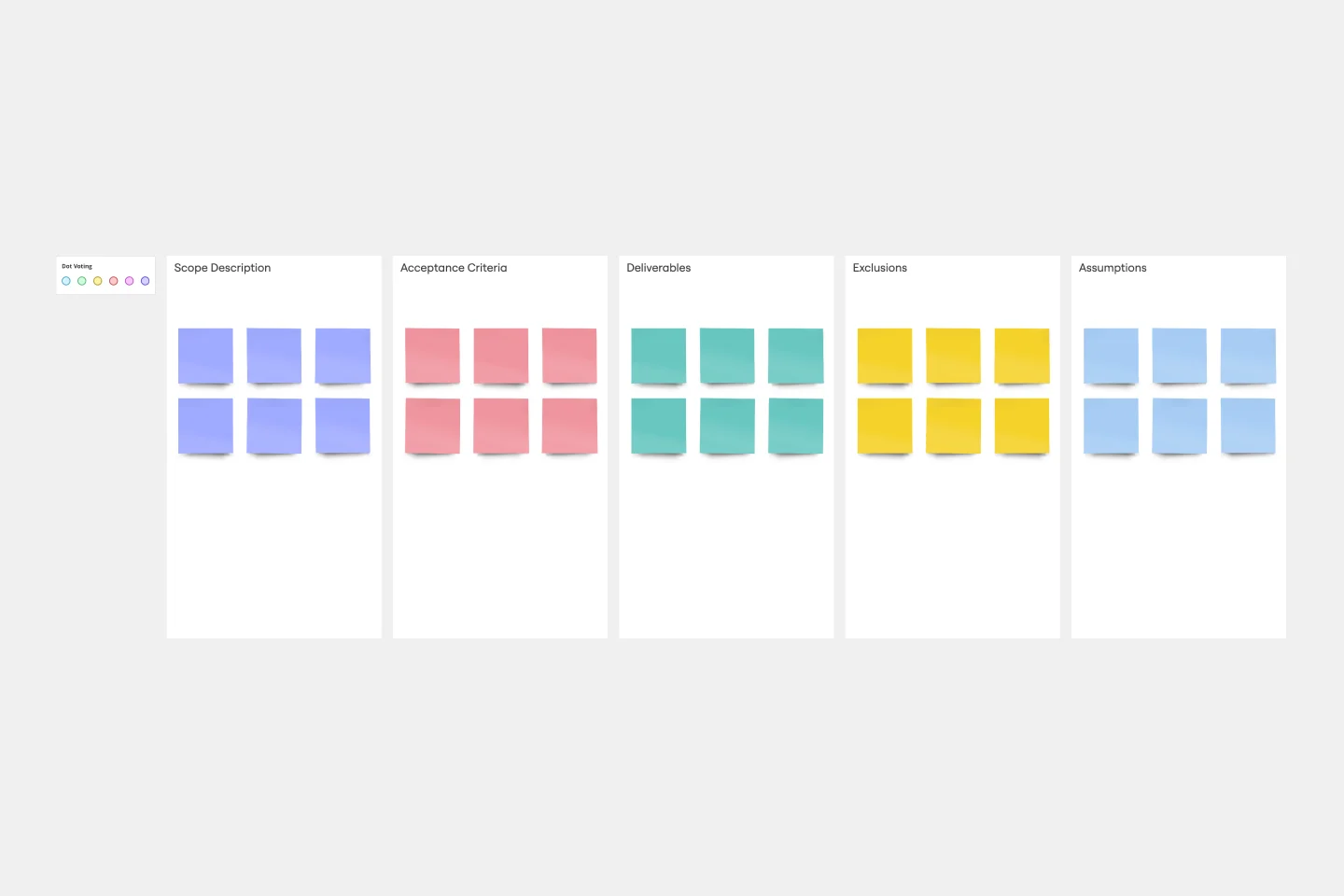All templates
Feature Planning Template

Miro
The AI Innovation Workspace
Miro brings teams and AI together to plan, co-create, and build the next big thing, faster. Miro empowers 100M+ users to flow from early discovery through final delivery on a shared, AI-first canvas. By embedding AI where teamwork happens, Miro breaks down silos, improves alignment, and accelerates innovation. With the canvas as the prompt, Miro’s AI capabilities keep teams in the flow of work, scale shifts in ways of working, and, ultimately, drive organization-wide transformation
Categories
Similar templates
Mitch Lacey's Estimation Game Template
0 likes
5 uses

Project Scope Template
1 likes
58 uses

Product Canvas Template
0 likes
54 uses

PI Planning (Basic)
0 likes
2 uses

Mitch Lacey's Estimation Game Template
0 likes
5 uses

Project Scope Template
1 likes
58 uses

Product Canvas Template
0 likes
54 uses

PI Planning (Basic)
0 likes
2 uses
